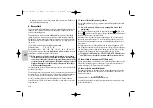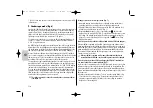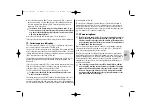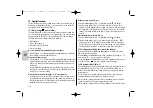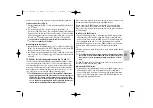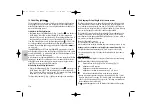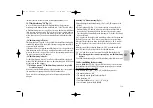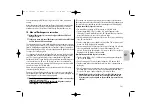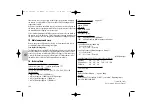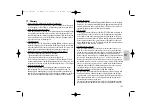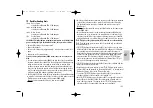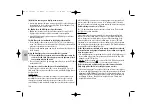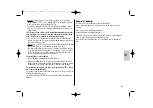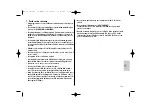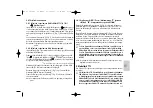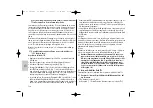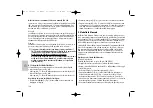
123
ķ
17. Glossary
• Correct exposure indication in the camera’s viewfinder
When in automatic or TTL mode, many cameras indicate correct exposure
or underexposure of the film by a corresponding signal in the viewfinder.
• Automatic flash synch speed control
When flash readiness is reached, most system cameras automatically change
over to flash synch speed. On some cameras, slower shutter speeds are re-
tained. If flash readiness indication disappears after the flash has been fired,
or when the flash unit is switched off, then the camera will automatically re-
turn to the previously set shutter speed.
• Triggering control
If the aperture set on the lens and the prevailing lighting conditions require a
shutter speed that equals or is faster than the flash synch speed, then a flash
will not be fired when the shutter is released on the camera. The shot is then
taken with the existing ambient light, thereby avoiding overexposure.
• Optional 1st or 2nd curtain synchronisation (see Fig. 10 and 11)
Two forms of flash synchronisation are available:
- The moment when the first shutter curtain opens
- The moment just before the second shutter curtain closes
The desired synchronisation is pre-selected on the SCA adapter. Second
curtain synchronisation is particularly advantageous when using slow shut-
ter speeds and shooting moving objects that have their own source of light.
• Autofocus measuring beam
The AF measuring beam is activated by the camera electronics when the
ambient lighting level is no longer sufficient for automatic focusing. The
beam projects a striped pattern on to the subject, and the camera uses this
pattern to focus automatically. If an SCA 3xx autofocus adapter is used, then
only the AF measuring beam integrated in this adapter will be activated.
• Program flash mode
Some cameras merge ambient light and flash illumination in the Program
flash mode. The camera automatically sets the appropriate shutter speed/
aperture combination and controls the flash in TTL mode. This ensures ex-
ceptionally simple operation of flash unit and camera.
• TTL fill-in flash
Some system cameras offer the possibility of TTL fill-in flash in addition to
normal TTL flash control. This mode is used for daylight shots to brighten
dense shadows and when shooting against the light. Based on the sensor
measurement conducted inside the camera and the subsequent evaluation
by the camera electronics the correct amount of flash light is used to pro-
duce a balanced exposure. In TTL fill-in flash mode, the camera automati-
cally performs a flash exposure correction.
• TTL flash exposure correction
There are certain situations when the sensor inside the camera can be con-
fused. This is the case with very dark subjects in front of a very bright back-
ground (resulting in an underexposed subject) or a particularly bright subject
in front of a very dark background (resulting in an overexposed subject).
Normal exposure correction can be completed by way of aperture and shutter
speed control, changing the film speed, or a +/- correction on the camera.
However, this changes all elements involved in an exposure. Consequently, a
special flash exposure correction is possible on some cameras. With such flash
exposure correction the overall exposure is retained, while the dark parts are
brightened with fill-in flash. For further details please refer to the respective
operating instructions for the given camera and the adapter.
• Anti-red eye preflash (only with Nikon 3402 SCA adapter)
Red eyes are a purely physical effect that always arises when people look
directly at the camera, the ambient light is relatively dark, and the flash
unit is mounted on or alongside the camera. The flash lights up the blood-
filled retina at the back of the eye which passes through the pupil and is
recorded by the camera as a red spot.
The red-eye reducing preflash function results in a significant improvement.
In this function the mecablitz fires three visible, weak preflashes, before the
704 47 0099.A3 54 MZ-4i 01.02.2007 13:41 Uhr Seite 123


